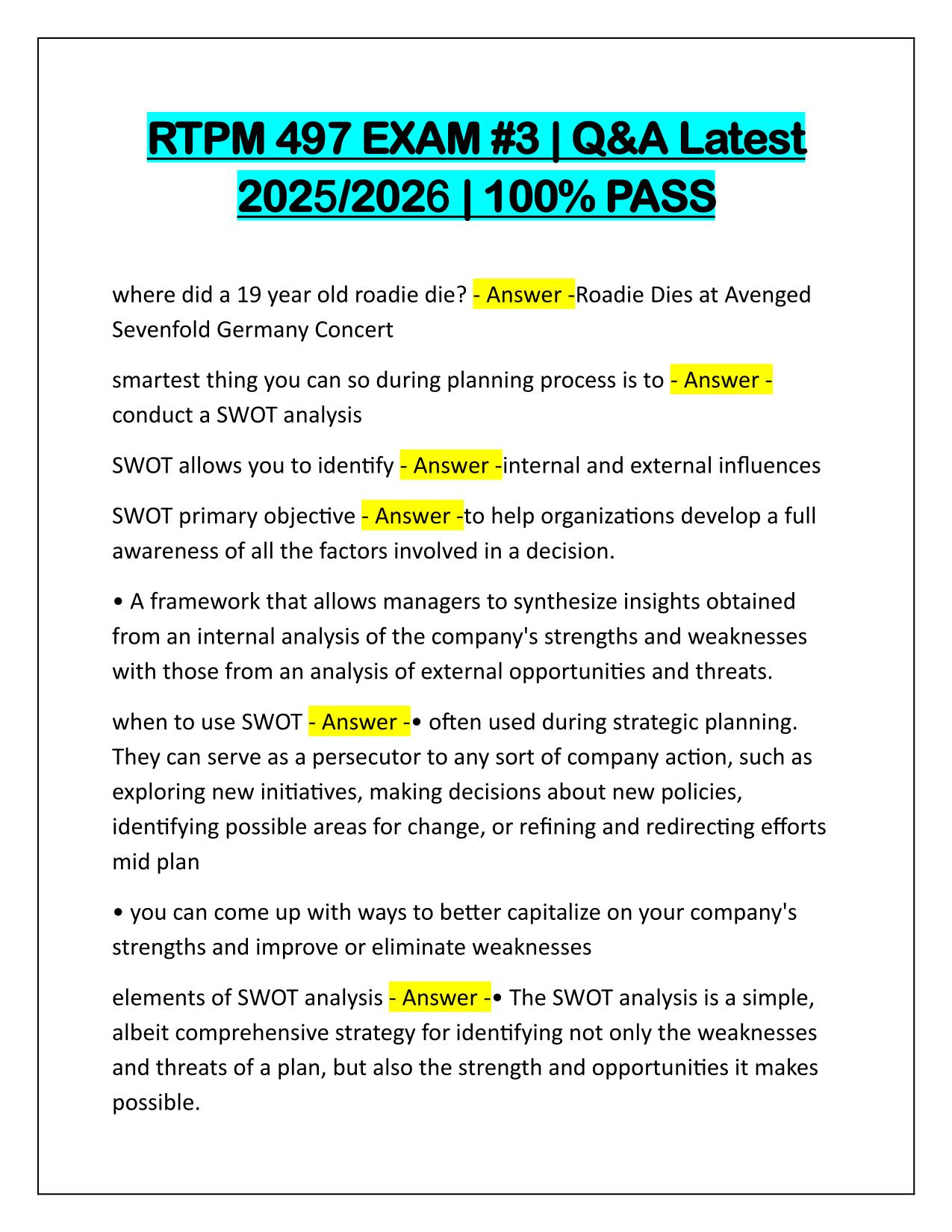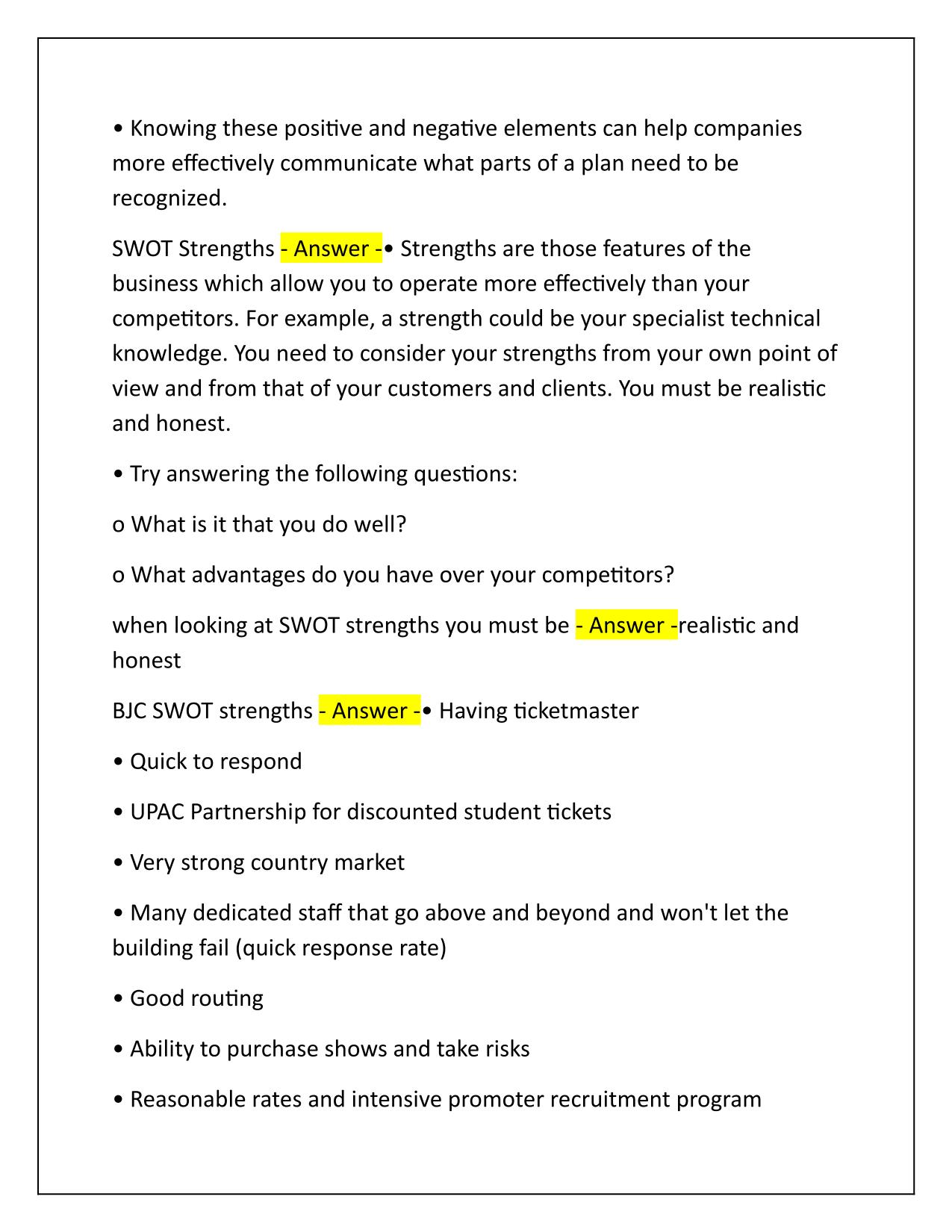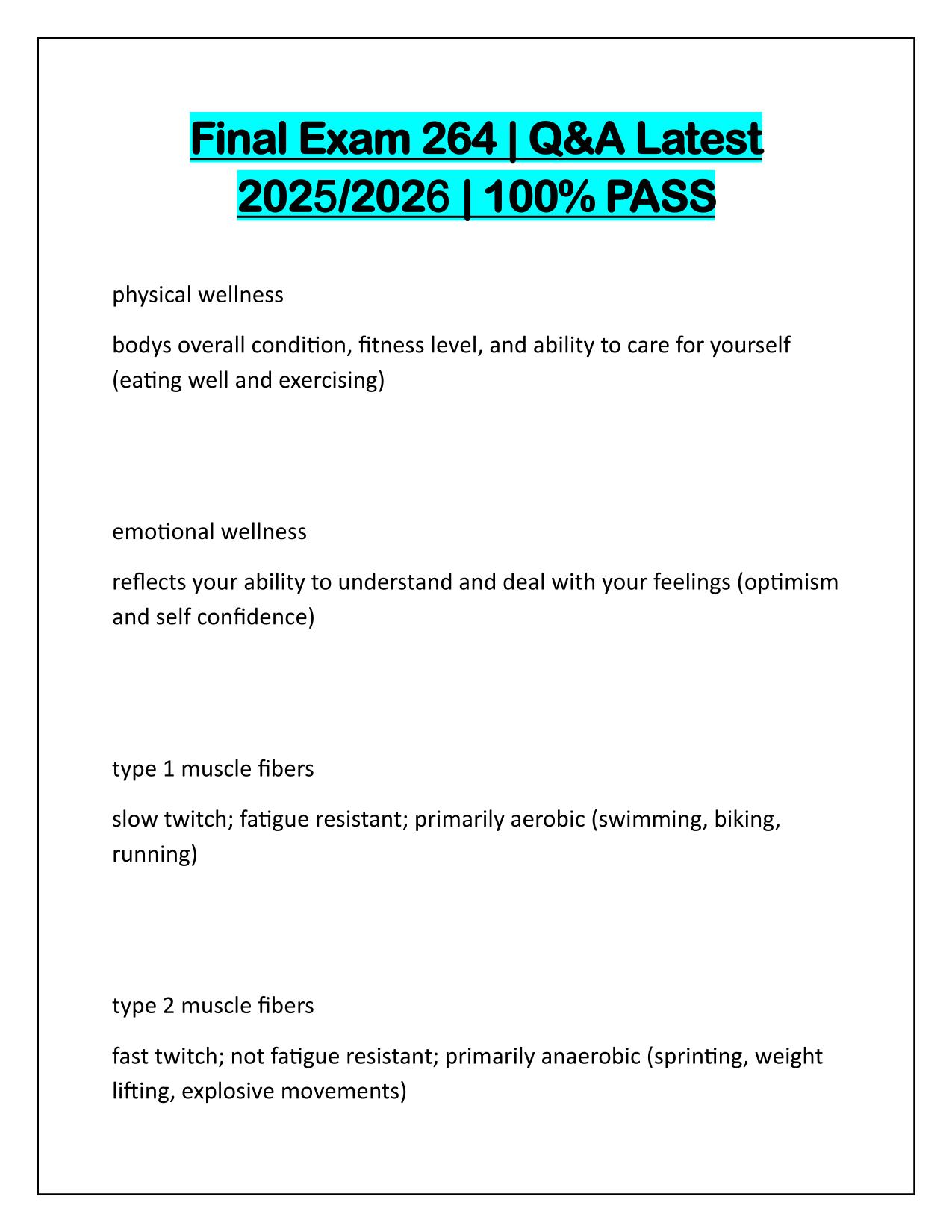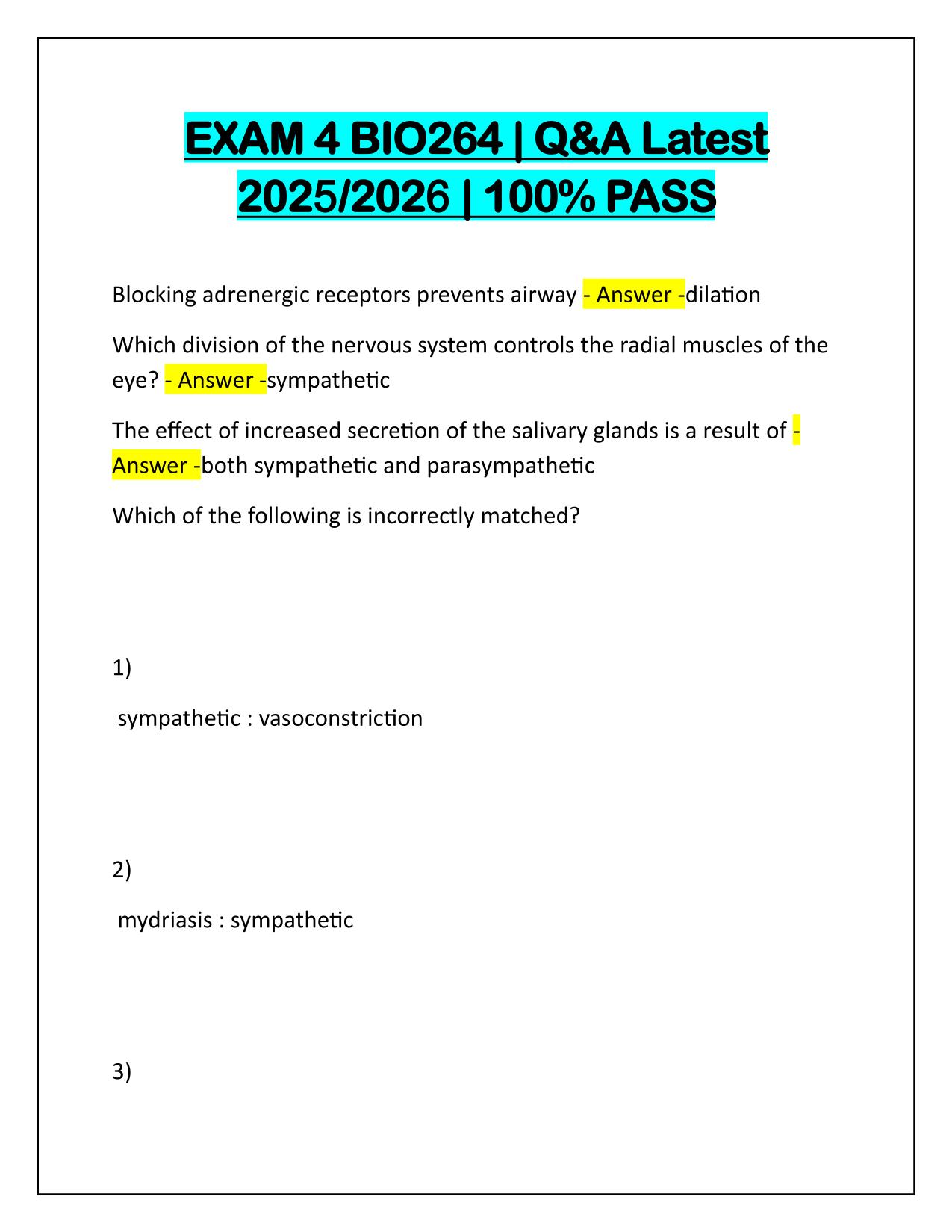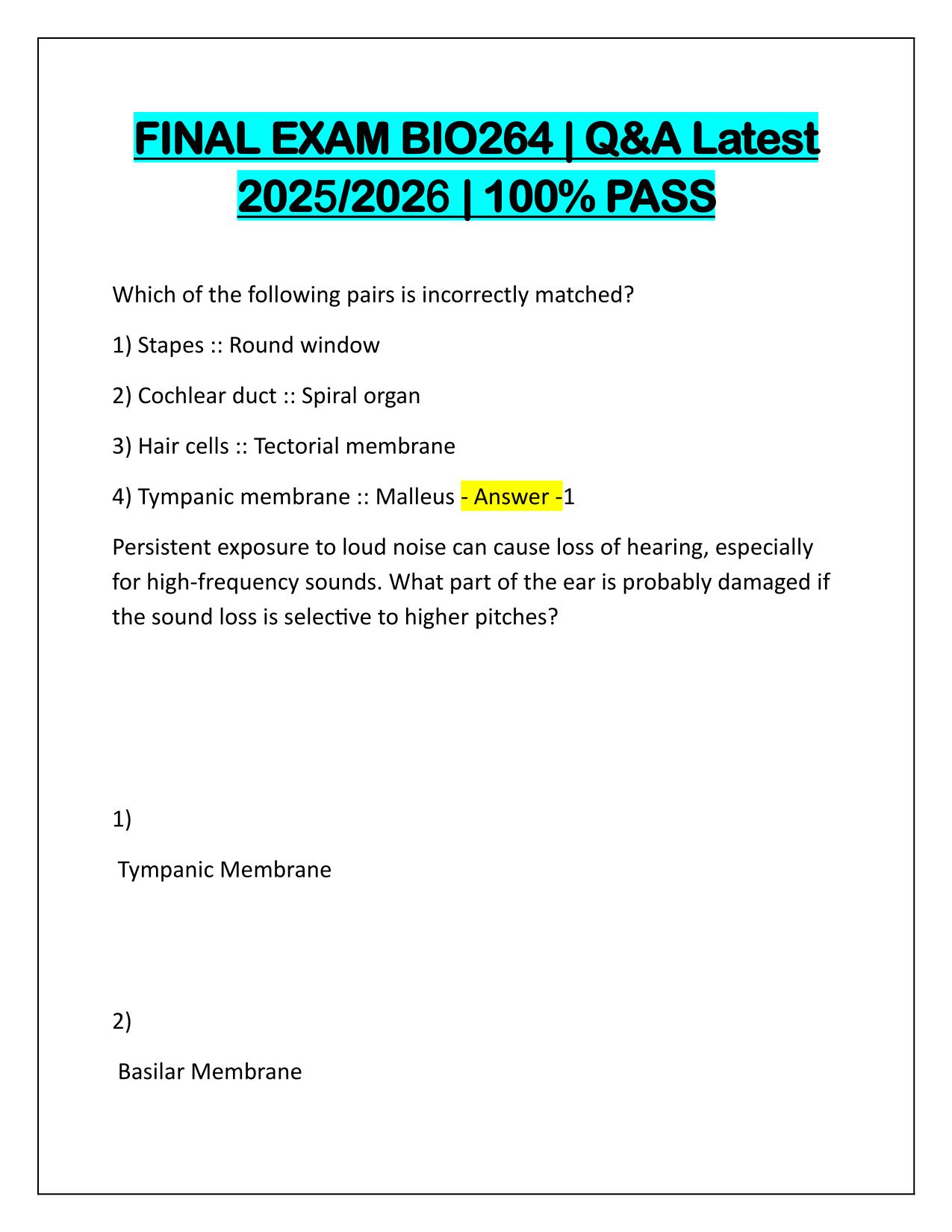RTPM 497 EXAM #3 Q&A Latest Update 2025
Course:
BIO264
Institution:
BIO264
RTPM 497 EXAM #3 Q&A Latest Update 2025
After purchase, you get:
✅ Instant PDF Download
✅ Verified answer explanations
✅ Refund if not Satisfied
✅ Prepared for 2025/2026 test cycle
Document Information
| Uploaded on: | May 5, 2025 |
| Last updated: | May 5, 2025 |
| Number of pages: | 14 |
| Written in: | 2025/2026 |
| Type: | Exam (elaborations) |
| Contains: | Questions & Answers |
| Tags: | RTPM 497 EXAM #3 Q&A Latest Update 2025 |
Seller Information

AdelineJean
User Reviews (0)
Exam (Elaborations)
$9.50
Bundle Deal! Get all 4 docs for just $18.00
Add to Cart
100% satisfaction guarantee
Refund Upon dissatisfaction
Immediately available after purchase
Available in Both online and PDF
$9.50
| 0 sold
Related Documents
Available in a Bundle
Content Preview
RTPM 497 EXAM #3 | Q&A Latest 2025/2026 | 100% PASS where did a 19 year old roadie die? - Answer -Roadie Dies at Avenged Sevenfold Germany Concert smartest thing you can so during planning process is to - Answer conduct a SWOT analysis SWOT allows you to identify - Answer -internal and external influences SWOT primary objective - Answer -to help organizations develop a full awareness of all the factors involved in a decision. • A framework that allows managers to synthesize insights obtained from an internal analysis of the company's strengths and weaknesses with those from an analysis of external opportunities and threats. when to use SWOT - Answer -• often used during strategic planning. They can serve as a persecutor to any sort of company action, such as exploring new initiatives, making decisions about new policies, identifying possible areas for change, or refining and redirecting efforts mid plan • you can come up with ways to better capitalize on your company's strengths and improve or eliminate weaknesses elements of SWOT analysis - Answer -• The SWOT analysis is a simple, albeit comprehensive strategy for identifying not only the weaknesses and threats of a plan, but also the strength and opportunities it makes possible.
